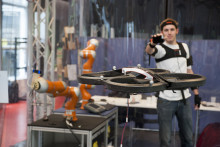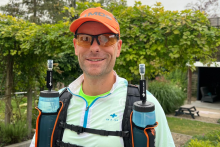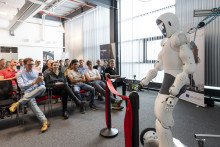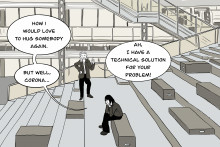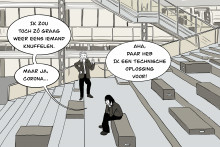Difficult environment
'The Alpine environment is very challenging,' explained Professor Stramigioli. 'The mobility in the mountains is difficult and the time frame to save people, who were buried under an avalanche for example, is very short. That is why the cooperation of human rescuers and robots could greatly increase chances of saving lives.'
Rescuer coordinating robots
The vision of SHERPA is to use a rescuer, who coordinates the robots with gestures and speech. There will be three types of robots – a quadcopter, which will serve as flying eyes for the rescuer. It will be able to monitor the affected area and search for a signal to determine where exactly the victims are. The second type of SHERPA robots will be planes that scan large territories. And the last machine used in rescuing missions should be a rover equipped with a robotic arm, which can pick up the quadcopter, recharge it and deploy it again if necessary.
UT Research
The UT research group Robotics and Mechatronics, led by Professor Stramigioli, is working on developing this robotic arm. The idea is to create an arm that can be controlled by telemanipulation. To achieve the optimal level of human-robot interaction, the rescuer should be equipped with sensors and wearable technology. The robotic arm will then be able to react to the controller´s movements and even muscle contractions, and therefore be much more precise.
Apart from developing the robotic arm, UT is involved in the technological support of the interaction between the human and the robot. 'The goal is an intuitive and adaptive cooperation between people and robotic technology,' summed up Professor Stramigioli.
Integration week
The lecture was a part of SHERPA Integration Week taking place at UT from the 6th of October until the 10th of October. The Integration Week represents an opportunity for researchers from the SHERPA consortium to meet and integrate their results. The consortium consists of seven academic groups – including the University of Twente -, two SME´s and the Italian Association of Alpine Rescuers. During this week, many experiments were carried out – the flying drones and gripping robot arm were tested as well.



